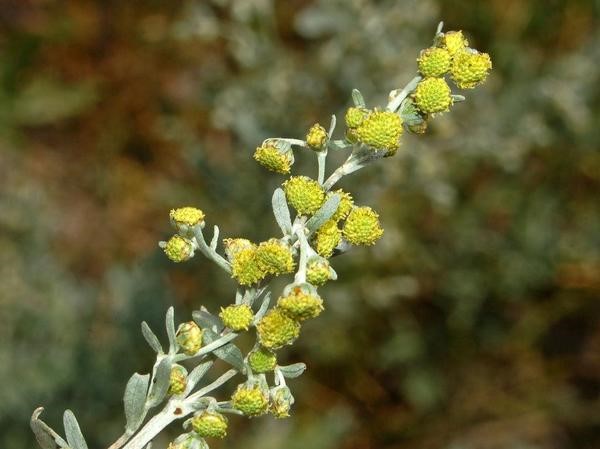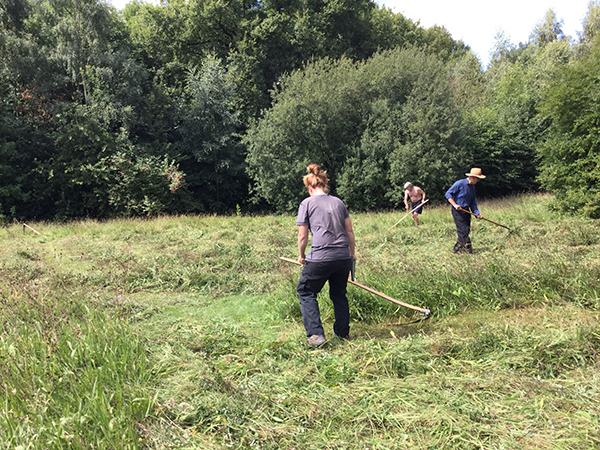Headlines
August in the garden

Grain harvests are being brought in from the fields, vegetable and fruit gardens are overflowing with delicious produce and hedgerows are heavy with berries. It’s a time to celebrate the warmth and togetherness of late summer, enjoying balmy summer evenings and clear skies.
After a busy July, although we still have tinctures to make and harvest crops to care for, the pressure is temporarily eased for the garden team. Our big arnica tincture has been made, the flowering plants have all been harvested and there are less visitors coming to the gardens. We can spend a bit more time appreciating our surroundings – an important moment, as we spend a lot of time looking down at the soil! Now is our chance to occasionally lean on the spade, enjoying the beauty of summer after the mad rush of June and July, before autumn starts to truly show itself.
Still, there are always plenty of jobs to be done. Mowing and weeding continue and, with most of the planting done, on an appropriate day we’ll spray horn manure to help the plants root in close connection with their surrounding environment. Compost-making and turning will also continue as summer heat is vitally important in creating good conditions for composting. We aim to build all the heaps before the coolness of autumn comes. Once the crops have been harvested, we can clear beds ready to sow our green manures in the week before the full moon. We use many types of green manures, but for the beds in the compound we sow grazing rye and vetch (tares) which not only help protect the soil from erosive winter weather, but help to open the structure and fix nitrogen, which helps to feed next year’s plants. Out in the larger crop fields, we get ready to rotate the crops for next year by ploughing or spading the ground and sowing green manures (clover, trefoil and mustard) there too.

We’ve harvested and dried lots of Wormwood flowering stems (Artemisia absinthium) which are full of shining bright yellow flowers with dusty pollen. Our yearly harvest of annual nettle (Urtica urens) is also flowering and ready for making into a tincture. Because of the heavy soils we have in our own Derbyshire gardens, the annual nettle struggles to grow here, so a fellow biodynamic grower provides our supply from lighter land 15 miles south, where they grow as weeds among his vegetables. Once the plants have been harvested and taken back to Weleda HQ, we make them into a tincture that’s used in our Insect Bite Spray and Combudoron Ointment.
As sad as it feels, August is the right time to cut our wildflower meadows. They’ve looked stunning this year and have been thoroughly enjoyed by all who’ve spent time in them. The end of the wildflower season is always poignant, but we make sure we treat the meadows well to ensure vibrant growth each year. And this year we have been very lucky to learn a new but very old skill; scything. Our seasonal gardener Fiona Pollock, is a skilled scyther and she’s taught us how to manage our meadows in a traditional and sustainable way using lightweight Austrian scythes.
We have six meadows on site that are under careful management with two wet meadows which need specific attention as we harvest spring cowslips from these areas. And it is these two meadows, the spring and summer meadows which we practiced our new scything skills on. For many years, we’ve used machinery to cut our meadows in late summer in order to allow the wildflower seeds to ripen and fall, in turn improving the diversity of plants over the years. This machine is ok, but it’s loud, smelly with fumes and not very supportive of the wildlife that lives in this habitat. By scything instead, we’re not only lessening soil compaction by avoiding machinery on the ground but we’re also given the opportunity to really get to know the land under the meadow much more. There’s no barrier between you and the lay of the land, apart from a light weight Austrian scythe which, once adjusted to your own height and shape, is a pleasure to use. You learn the art of reading grass in terms of the direction it lays which determines which angle you cut from, therefore you get a closer cut which in turn allows more fertility to be removed from the meadow. Because our spring and summer meadows have such a wide range of plant diversity, Fiona said they were very nice to cut, and will continue to get better by using the scythe in the years to come.

One of the clear advantages of using a scythe is that you can hear and see any wildlife that needs rescuing from the blade before any damage occurs. I am sure many harvest mice, frogs and newts were saved by the lack of a speedy noisy engine! Birds were not disturbed by our peaceful swooshing sounds and the duration taken to scythe gave time for butterflies and other animals to move to different areas of the site and continue their life cycle. This tool has also proven to be very useful in cropping green manures for our compost making which was an unexpected bonus as you can choose to cut at any height needed.
Once the meadows are cut, the ripened seeds from the wildflowers will fall to the ground. The flower-rich hay is left to dry out for a few days, allowing more seed to drop and settle on the ground, ready to grow next year. We then rake off and take away all that’s been cut, keeping the soil fertility down, as most wildflowers prefer nutrient poor soils. This interruption of nature’s fertility-building processes is part of traditional agriculture, which has built our indigenous flora. For the second year running, we have an arrangement with the Derbyshire Wildlife Trust to cut and take away the remaining four meadows on site. Knowing our meadow seed will help to develop the meadows of their local nature reserves is heart-warming indeed.
If you would like to know more about scything, visit the Scythe Association.Many other seeds are ready for collecting now and it’s a wonderful job to do, although Augusts rain showers are making it a bit tricky to find the necessary dry periods. Creating a robust seed bank is extremely important to us, as we’re collecting from plants that have acclimatised to our land over several generations. It is also quite difficult to buy the biodynamic seed varieties we need for medicinal plants, so it is much better for us to be self-reliant.
The drowsy days of summer are almost over, but there’s a richness and warmth in the biodynamic garden that creates such pleasure; a time to work, but a time also to pause and reflect, as we move towards the shorter days of the year.
